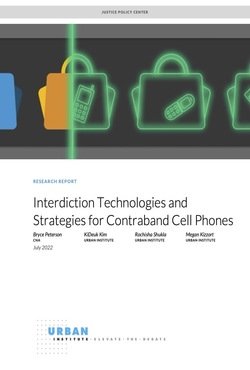By Helen Taylor and Lorana Bartels
This project scoped whether application software for a mobile or similar device (an app) that supports Aboriginal and Torres Strait Islander people on bail or parole is regarded as appropriate, useful and beneficial within the ACT Aboriginal and/or Torres Strait Islander communities involved with the justice system. To do this, the scoping project sought the views and advice of participants in the Galambany Circle Sentencing Court (Galambany) (i.e. the potential end-users of such an app), as well as the views of key stakeholders across several organisations that engage with Galambany and the justice system more generally, to determine whether to recommend to the ACT Government that such an app be developed. The aims of this research project were to: • ascertain whether an app that supports people on bail or parole is a priority for, and is of value to, Aboriginal and/or Torres Strait Islander communities in the ACT that engage with Galambany; and • if so, gain input from Galambany participants (the potential end-users) and Aboriginal and/or Torres Strait Islander and other professional stakeholders, who work in the ACT criminal justice system, on what app features would be useful in supporting compliance with bail and parole conditions, to inform the potential development of an app. The first section examines criminal justice data on the issues of bail, remand, parole and Indigenous incarceration. Data from the Australian Bureau of Statistics (ABS), indicate that, in the March 2022 quarter, 40% of Indigenous adults in custody at the Alexander Maconochie Centre (AMC) were unsentenced. In addition, 27% of Aboriginal and Torres Strait Islander people in prison in the ACT on 30 June 2021 had a justice procedure offence, which includes breach of bail or parole, as their most serious offence; this was much higher than for non-Indigenous prisoners in the ACT (23%) or both cohorts nationally (10% and 7% respectively) (ABS, 2021a). This highlights the need for measures that help Aboriginal and Torres Strait Islander people comply with their bail, parole and other justice orders, in order to reduce Indigenous incarceration. The second section examines the increasing availability and use of mobile technology for behaviour change. Such technological advances have created opportunities within the justice context and the past decade has seen the development and use of mobile technology in the criminal justice system. This section outlines the theoretical framework in which the research is situated, which draws on behavioural economics, especially nudge theory. The behavioural economics literature in general, and that on nudges in particular, is relevant for the design of criminal justice apps, as it provides a number of (non-coercive) influences on behaviour and thinking that can be used to improve justice outcomes. The third section outlines the methodology and ethics approval process undertaken for this research. The project adopted a mixed-methods approach, involving the use of semi- structured interviews, focus groups and analyses of secondary source material. Semi-structured interviews and focus groups were conducted with two different stakeholder groups: professional stakeholders (Group 1) and Galambany clients, as people with lived experience of bail and/or parole (Group 2). In the fourth section, we thematically analyse responses from the semi-structured interviews and focus groups with Group 1 and Group 2 participants. Participants highlighted a range of challenges that make complying with bail and parole conditions harder, including the lack of stable housing, access to transport and other practical issues related to reporting requirements, trouble keeping track of appointments and a lack of structure in their daily lives. Participants also identified what they would consider to be the most useful features of a mobile app designed to help them comply with bail and/or parole conditions. These included an appointment reminder function, a list of useful information and contacts, and reminders of trigger times (those times during the day or week in which a person is particularly vulnerable). Nearly all of the people we spoke to (34 out of 35; 97%), supported the idea of an app to help people comply with their bail and/or parole conditions. However, a number of concerns were raised by participants, in particular how the data from an app would or could be used and whether the app would be able to track a person’s whereabouts. These concerns were raised by both Group 1 and Group 2 participants. The report concludes with the recommendation that a mobile app to help support people on bail and/or parole be developed and piloted, but that serious consideration regarding security and privacy concerns needs to be taken into account, in the development of any such app. The proposed app should be developed solely for the purpose of helping to support users’ success and should not be used as a compliance tool. It is further recommended that the app be trialled among a small cohort in the first instance, followed by an rigorous independent evaluation, to inform whether it is working as intended and is of utility to people on bail or parole.
Canberra: ANU Centre for Social Research and Methods, 2022. 53p.



